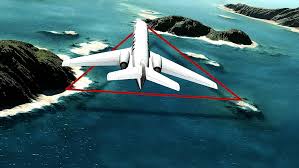Mid-Ocean Ridge Example: A Journey Through the World’s Longest Mountain Range Beneath the Sea

When we think of mountain ranges, towering peaks like the Himalayas or the Andes often come to mind. However, hidden beneath the surface of the world’s oceans lies the longest and one of the most fascinating mountain ranges on Earth — the mid-ocean ridge. Stretching for over 65,000 kilometers, this underwater mountain chain plays a crucial role in the geology of our planet. In this blog, we will explore what a mid-ocean ridge is, provide notable examples such as the Mid-Atlantic Ridge, and delve into the processes, features, and significance of these incredible underwater formations.
What is a Mid-Ocean Ridge?
A mid-ocean ridge is an underwater mountain system formed by plate tectonics. It occurs at divergent boundaries, where two tectonic plates are moving away from each other. As the plates separate, magma rises from the mantle to fill the gap, creating new oceanic crust. Over time, this process results in the formation of a continuous mountain range along the ocean floor.
Mid-ocean ridges are characterized by a central rift valley, high volcanic activity, hydrothermal vents, and unique ecosystems that thrive in extreme conditions. These features make mid-ocean ridges some of the most geologically active and biologically intriguing areas on the planet.
The Most Famous Mid-Ocean Ridge: The Mid-Atlantic Ridge
One of the most well-known examples of a mid-ocean ridge is the Mid-Atlantic Ridge (MAR). This ridge runs down the center of the Atlantic Ocean, effectively splitting it into eastern and western halves. It stretches from the Arctic Ocean in the north to the Southern Ocean near the sub-Antarctic islands.
The MAR is especially significant because it is where the North American Plate and the Eurasian Plate, as well as the South American Plate and the African Plate, are moving apart. The spreading rate along the Mid-Atlantic Ridge is relatively slow, about 2.5 centimeters per year, but over millions of years, it has created a vast ocean floor and played a critical role in shaping the geography of the Atlantic basin.
Unique Feature: Iceland
A remarkable feature of the Mid-Atlantic Ridge is that part of it is above sea level — Iceland. This island nation is essentially a volcanic outpost of the ridge and is one of the few places on Earth where you can walk between two tectonic plates. The Þingvellir National Park in Iceland showcases this geological phenomenon, where visitors can see and even snorkel between the Eurasian and North American plates.
Iceland’s existence and volcanic activity are directly linked to the Mid-Atlantic Ridge, and the island continues to grow slowly as new magma surfaces along the ridge.
Other Notable Mid-Ocean Ridges
While the Mid-Atlantic Ridge is the most famous, it is just one segment of the global mid-ocean ridge system. Here are a few other important examples:
1. East Pacific Rise
Located in the eastern Pacific Ocean, the East Pacific Rise is another major mid-ocean ridge. It is characterized by a much faster spreading rate than the Mid-Atlantic Ridge, up to 15 centimeters per year. This fast movement results in less pronounced rift valleys but more extensive volcanic and hydrothermal activity.
The East Pacific Rise plays a significant role in the tectonic activity of the Pacific Plate, affecting the coastlines of Central and South America.
2. Indian Ocean Ridge System
The Central Indian Ridge, along with the Southwest Indian Ridge and the Southeast Indian Ridge, forms the mid-ocean ridge system in the Indian Ocean. These ridges are involved in the separation of the African, Indian, and Australian tectonic plates and are less studied than the Atlantic or Pacific ridges but are geologically significant.
Formation and Plate Tectonics
Mid-ocean ridges form at divergent plate boundaries. As tectonic plates pull apart, magma from the Earth’s mantle rises through the thinning crust and cools to form new oceanic lithosphere. This ongoing process of seafloor spreading gradually pushes older crust away from the ridge, creating symmetrical patterns of magnetic stripes that help scientists understand Earth’s geological history.
Over millions of years, mid-ocean ridges contribute to continental drift and the recycling of Earth’s crust through subduction zones elsewhere on the planet.
Hydrothermal Vents and Deep-Sea Life
One of the most astonishing discoveries related to mid-ocean ridges is the presence of hydrothermal vents. These are fissures in the seafloor where superheated water rich in minerals is expelled from the Earth’s crust. The temperatures near these vents can reach up to 400°C (752°F), and yet, life thrives in these extreme environments.
Unique organisms such as giant tube worms, clams, and microbes form ecosystems that do not rely on sunlight but rather on chemosynthesis — a process where organisms derive energy from chemicals like hydrogen sulfide. These communities have revolutionized our understanding of where and how life can exist.
Scientific Significance
Mid-ocean ridges are crucial for understanding plate tectonics, ocean floor evolution, and global geochemical cycles. Scientists use tools like sonar mapping, submersibles, and remotely operated vehicles (ROVs) to study these underwater mountains. The magnetic patterns preserved in the oceanic crust along ridges have also provided critical evidence supporting the theory of continental drift and seafloor spreading.
Moreover, studying the thermal and chemical emissions from hydrothermal vents gives insight into early Earth conditions and the potential for life on other planets, such as Europa or Enceladus, moons believed to have subsurface oceans.
Conclusion
The Mid-Atlantic Ridge and other examples of mid-ocean ridges remind us that some of Earth’s most awe-inspiring features are hidden beneath the ocean’s surface. These undersea mountain ranges are not just geological curiosities; they are dynamic systems that shape our planet’s surface, influence ocean currents, support unique ecosystems, and provide valuable insights into Earth’s history.
From the volcanic peaks of Iceland to the deep hydrothermal vents of the Pacific, mid-ocean ridges are a testament to the power and complexity of nature. They are living laboratories where scientists continue to unlock the mysteries of our planet — and perhaps, even the origins of life itself.






Leave a Comment